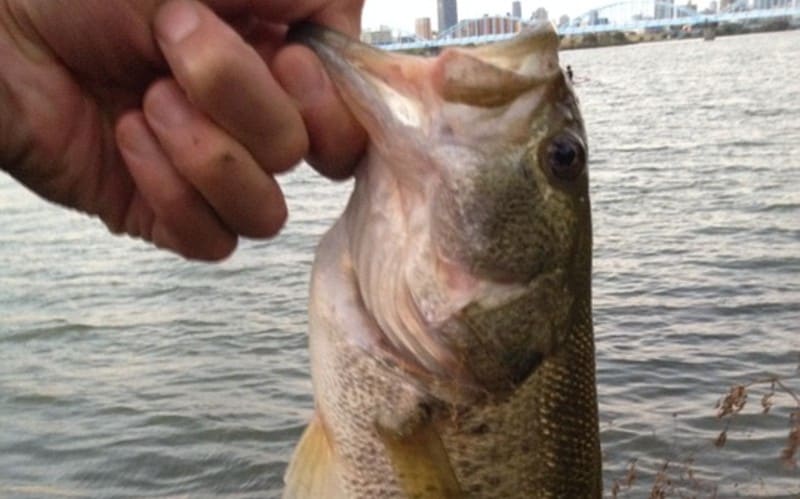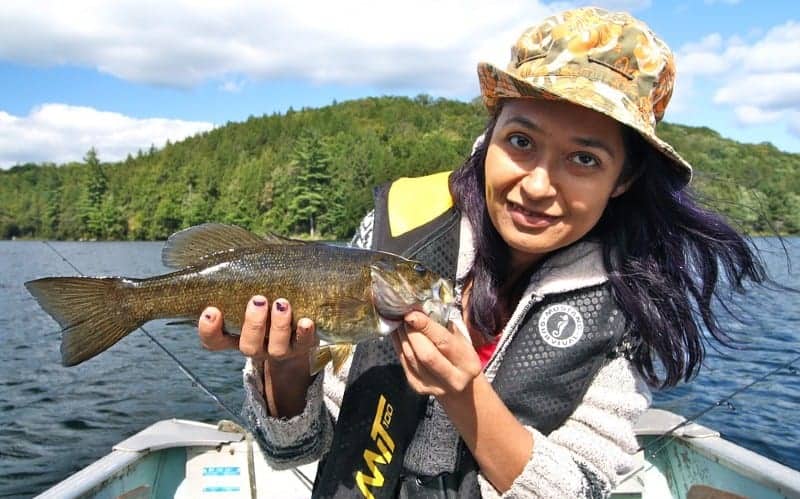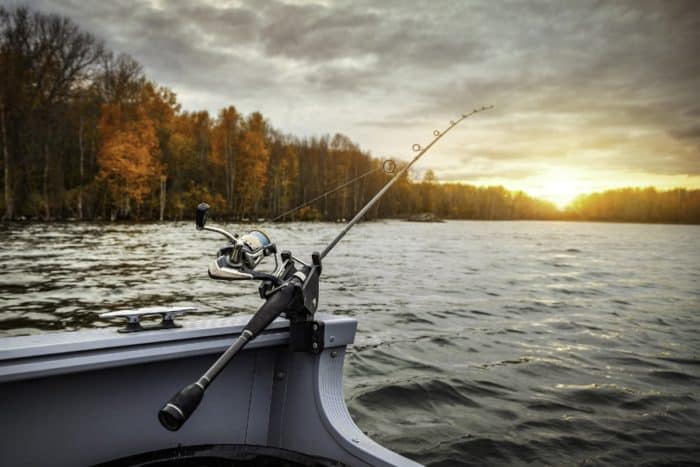How to Hold a Bass
Learning how to properly hold a bass is a big part of bass fishing. Many bass anglers are quick to get out on the water and reel in a largemouth bass. Unfortunately, they aren’t sure what to do when they land it. You need to know how to hold and handle a bass safely. This is especially true for catch and release fishing. You want to cause as little harm to your bass as possible.
There is a right way and a wrong way to hold a bass. Or, more specifically, there is more than one right way, but many wrong ways.
You need to take a few things into account when you hold a bass. How you’re placing your hands. Where your thumb goes and where the rest of your fingers go. If you’re going to do a horizontal or a vertical hold. The body weight of the bass and whether you can grab its bottom lip. Not to mention the problems with the slime coat and the teeth. Yes, bass have teeth! Make sure to avoid them when you can.
Let’s take a look at some techniques for maintaining a vertical hold or horizontal hold. These will prevent you from dropping the fish. They’ll also protect you from the teeth and ensure you can easily catch and release your bass.
Vertical Hold for Bass
Holding a bass with a vertical hold is an easy and relatively safe way to hold the fish. You need to be aware of the angle you’re holding the bass at, though. Whether it’s a smallmouth bass, largemouth bass or striped bass, try to keep it straight up and down. The more you tilt the fish, the more damage you can do to its lower lip. This can damage its teeth as well. That will affect its ability to hunt when you release it.
Holding it straight up and down relieves pressure on the jaw. Place your thumb firmly in the bass’ mouth and grip the lower lip. Hold it with the rest of your fingers outside the lip firmly. You should avoid the teeth this way. It will allow for a firm but non-damaging grip on the jaw. It also helps avoid that slime coat. That way you’re less likely to drop the fish.
This method of holding bass is not supported by all anglers. That’s because not every angler is able to maintain the correct angle. There is some science behind why this is bad for a bass. Let’s look.
How a Bass Catches Prey
A bass does not eat food like a human does. Without hands, a bass needs to get food in its mouth through suction power. The muscles in the jaw of a bass are able to create a vacuum in the fish’s mouth. They suck in water and prey, expelling the water from their gills. The food is then swallowed, and the fish keeps hunting.
Imagine how much strength it would require you to suck in your dinner rather than lifting it. There is a lot of muscle power required. When you hold a fish by the lip, it puts strain on the muscles. Even if the jaw itself isn’t damaged, the muscles are connected to a fulcrum point in it. If the weight of the fish is not precisely distributed, it rests on that point. So both the jaw and the muscles can suffer. This means even if you catch and release, the fish may be unable to properly hunt.
For this reason, many anglers recommend the horizontal hold method.
Horizontal Hold for Bass
The horizontal hold is what you want when you’re looking to take a pic of your catch. It’s visually more appealing and gives a better idea of the size of the trout. It also requires that you’re more careful.
Basically, you’re going to do the exact same thing you’ll do for the vertical hold. Grab the fish by the lower lip and avoid the teeth. Keep your other fingers below the lip for a good grip. But then, use your other hand to lift up the body of the bass. You’re going to want to grip it like you’re holding a taco. Thumb on one side and your other fingers on the opposite side. Keep the fish’s head slightly above the body. This relieves jaw pressure.
Holding Bass at an Angle
You may have seen photos of anglers holding their bass at an angle. The angled hold usually involves letting the body hang over your hand at an angle. This is a bad way to hold a bass. It puts too much pressure on the jaw. Any angle that puts the body at a 10 degree or more angle from the head is unhealthy. When you put the bass back into the water, they may have permanent damage.
Small bass, just a few pounds at most, may be safe at an angle. Their bodies are not heavy enough to put too much strain in this grip. But larger bass should not be held this way.
Why Holding a Bass is Important
No doubt you have seen some anglers let a fish flop around on the shore or a dock. Sometimes this is unavoidable, fish can be slippery. But that’s also the reason you need to avoid this as much as possible. That slime coat on a bass is not by accident. The layer is what is called the mucoprotein barrier. It is actually part of the fish’s immune system. If an improperly held fish loses that layer as it struggles, it will be endangered. This is important for any species of fish you’re after. You’ll need to be wary of this if you want to hold a catfish or a trout or anything.
As we have seen, the jaw muscles and bones are at risk if the fish is mishandled. Responsible angling means concern not just for your own catch, but for everyone else’s. Many fish species have been fished nearly to the point of extinction, and that includes some bass. Preserving the sport is an important part of enjoying it.
How to Avoid Bass Teeth
Bass have teeth that are sharp. Many a hasty angler has achieved “bass thumb” from putting their thumb too far in the fish’s mouth. This happens most often when you try to remove the bass from the water. When you still have it hooked and you’re ready to pull it in. Many anglers refer to this as lipping the bass.
In order to lip a bass, you just need to get your thumb over its lip and in its mouth. This allows you to maintain control until you are able to hold the bass. However, it will probably still be struggling. There’s also a chance your adrenaline will be pumping. Many anglers overreach at this point. Then your thumb goes too deep and scrapes the teeth of the bass. This can potentially bleed or lead to an infection.
The best way to avoid bass teeth is to be calm. It’s hard sometimes with a struggling fish, and you need to act fast. But do your best to maintain control. Don’t let your thumb go too deep in the fish’s mouth. Whenever possible, use your other hand to lift the bass right away. That minimizes any potential contact.
Things to Remember
Bass fishing is one of the most popular sports in angling. But to maintain bass populations so everyone can enjoy it, you need to be responsible. Knowing how to hold a bass is key. Follow these bass fishing rules whenever possible.
- Keep contact minimal. Overhandling fish is bad for the animal and can be dangerous for you as well if you get hit by the teeth.
- If you are catch and release fishing, make sure you get the bass off the hook as soon as you can.
- Use the horizontal method if you want a picture. Remember, you don’t need a picture of every fish, just the impressive ones.
- Keep aware of the slime coat and release the fish as soon as you are able. The less stress for the fish, the better.
- Consider using some fish grabbing aides. A net or a fish-grab tool can help and are less damaging to the fish.
- If you are fishing for sea bass, you can use the sea itself to help hold the fish. Wait for a rise in the waves to scoop up the fish, minimizing stress.
- However you hold the bass, remember not to squeeze. Squeezing a fish’s body, even if you don’t think it’s very hard, can be dangerous. The internal organs of a bass are very delicate. A wrongly placed thumb with too much pressure behind it can kill.
- Avoid the gills. This is hard to do sometimes, but you want to avoid the gill plate at all costs. As with any fish, this could cause serious damage to their respiratory system.
- When returning a bass to the water, slide it in head first. You may want to keep your hands under it for gentle support at first. Many fish will be stunned or shocked after being caught. This gives them a chance to orient themselves.
Categories: Fishing


















1 Comment
Denaus on August 1, 2021
Good info. Soo many times ive seen and done it myself. Knowing this really helps preserve the fish and the sport. Ill be posting this to my fb group north texas fishing addicts!!!